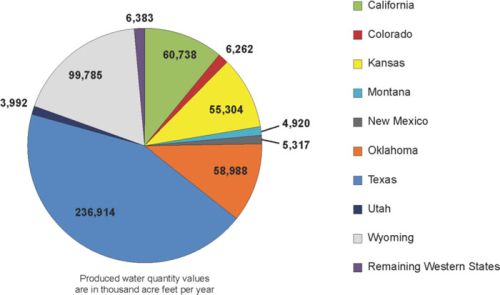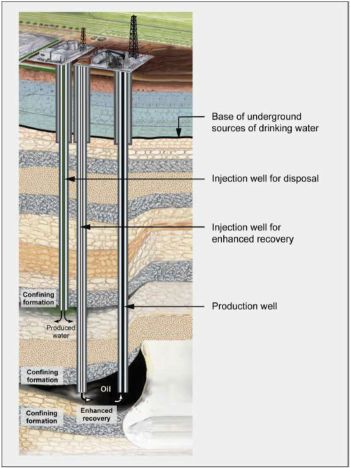Article by Earl L. Hagström (Sedgwick LLP), Christopher Lyles (Integral Consulting Inc.), Mala Pattanayek (Integral Consulting Inc.), Bridgette DeShields (Integral Consulting Inc.) and Mark P. Berkman (Brattle Group)
ABSTRACT
Produced water should be viewed as an environmental asset— part of the water resource solution—not as a waste that contributes to environmental problems; its treatment and reuse can reduce the stress on fresh water resources. Treatment cost is the most significant factor determining the volume of produced water that will be available for reuse. Water pricing, which is in large part a matter of public policy, must also be considered when reexamining how to maximize the use of this valuable resource. When deciding whether to treat and use produced water companies will need to weigh the risk of litigation and regulatory enforcement actions against the benefits of introducing treated water into the stream of commerce. Allaying the public's fear of chemicals in the water supply is also a significant factor in determining whether produced water is viewed as part of a water resource solution or as a waste by-product.
Introduction
As population increases and land uses change, in combination with changes in weather patterns and climate in the United States and worldwide, the demand for freshwater supply has increased. This problem is particularly evident across the arid western United States where water resources are particularly stressed given unprecedented drought and competing demands for ever scarcer water. The use of treated wastewater can help reduce stress on freshwater resources, allowing surface water and groundwater to be used for other purposes. As a result, treated wastewater, including produced water—a byproduct of oil and gas exploration and production— can represent a viable resource. The most significant constraint on the widespread use of produced water is the ability to treat the water to meet the water quality standards for its intended end use. After that hurdle has been met, the next step is to overcome public perception that treated water is tainted and unsafe to use.
This article discusses the state of produced water generation, current handling practices and constituents of potential concern (COPCs) in produced water, and explores various reuse options and the environmental issues, risks, potential liabilities, and regulatory policies associated with reuse of produced water. Additionally, this article features a technical highlight section, which examines technical aspects of agricultural use of produced water, discusses costs, and provides insight on legal implications, public perception, and the future of water in the West.
Background
Produced water is water trapped in underground formations that is brought to the surface during oil and gas explorations (Guerra et al. 2011; National Energy and Technology Laboratory (NETL) 2014). This water has been in contact with the hydrocarbon-bearing formation for centuries, and as a result, contains some of the chemical characteristics of the formation and the hydrocarbon itself. Produced water may include water from the reservoir, water injected into the formation, and any chemicals added during the production and treatment processes. Produced water is sometimes referred to as brine or formation water. Constituents found in produced water may include:
- Salts (very old water left behind in the formation can be highly saline depending on the geologic formation)
- Oil (which can result from contact with the hydrocarbon bearing formation)
- Other natural inorganic and organic compounds
- Chemical additives from well drilling and operation
- Naturally occurring radioactive material (NORM)
Produced water is generated during conventional oil and gas production and production of unconventional sources such as oil shale, gas shale, tight sands gas, and coal bed methane (CBM). The volume of produced water and constituents present can vary significantly depending on the type of production and geological features present.
Unconventional oil and gas production operations often utilize techniques such as horizontal drilling and hydraulic fracturing to enhance recovery of the hydrocarbon, and generally produce much less water by volume than conventional oil and gas production. However, the enhancement process requires the use of large volumes of water. The largest waste stream associated with unconventional operations is "flow back" or "frac" water (Guerra et al. 2011), which differs in composition from produced water generated during conventional oil and gas production. In California, 38 percent of the substances used for fracking are not known because companies used nonspecific names or reported them as either trade secret, confidential, or proprietary (Pacific Institute 2016). For wells across the United States, information on chemicals that are not trade secret, confidential, or proprietary can be found on the Frac Focus Chemical Disclosure Registry Web site (www.Fracfocus.org) and additional information on chemicals can be found on state specific Web sites.

Figure 1. Produced water quantities by state in the western United States (adapted from Guerra et al. 2011).
Produced water is considered a byproduct of oil and gas production and is most commonly treated as waste for disposal, rather than reuse, and is the largest volume waste stream associated with oil and gas exploration and production. The National Energy Technology Laboratory (NETL) (2014) reports that approximately 21 billion barrels of produced waters are generated annually in the United States (this includes onshore and offshore production). On average, anywhere from seven to ten barrels of water are produced for every one barrel of crude oil (one barrel is approximately forty-two gallons). Figure 1 presents produced water quantities by state in the western United States.
There is significant overlap between areas of oil and gas production and areas with a potential for water conflict (Guerra et al. 2011; Ceres 2014). Competing demands on limited freshwater supplies for agricultural, municipal, recreational, industrial, and ecological use exist and are likely to continue to persist across the western United States in years to come.
Current handling practices
As produced water is largely considered a waste material and is the single largest waste stream associated with oil and gas production, its management and disposal are key factors that must be taken into account prior to undertaking exploration and production programs. Depending on a variety of factors, produced water may be disposed of by land application or discharge, evaporation ponds, percolation ponds, subsurface injection, and offsite trucking (Clark and Veil 2009). Figure 2 depicts a conceptual cross-sectional view of wells used for underground injection for enhanced production and wastewater disposal.

Figure 2. Injection wells for enhanced production and wastewater disposal.
Subsurface reinjection is the preferred disposal method, although it can be infeasible as the formation may not be able to receive the produced water. Injection wells are sometimes operated in concert with adjacent extraction wells to enhance recovery. A combination of produced water and other constituents is used to flood the reservoir to increase the recovery of oil and gas. This process is referred to as enhanced recovery, and is a common practice in the industry. Where these methods are unavailable or not feasible to producers, produced water can be trucked off-site to permitted disposal wells, which is costly, where they are injected far below potable water supplies into acceptable formations. These types of permitted wells are known as Class II injection wells.
Several Class II wells were recently closed in California after a USEPA (U.S. Environmental Protection Agency) review of the state oversight program revealed that some permitted wells have been injecting wastewater into potentially potable water supplies. The state is currently working toward compliance with the federal Safe Drinking Water Act and has recently extended emergency rulemaking necessary to do so. California is not the only state with oversight lapses. As discussed in a June 2014 Government Accountability Office (GAO) report to congressional requesters, "Drinking Water—EPA Program to Protect Underground Sources from Injection of Fluids Associated with Oil and Gas Production Needs Improvement," the GAO recommends that the underground injection control program (which administers oversight of state class II wells) task its working group with reviewing emerging risks and developing related program safeguards to protect underground sources of drinking water from becoming contaminated and that Congress approve additional rulemaking to both improve reporting/data transparency and better enforce violations.
Generally, potable water supplies are considered to be waters that have a salinity concentration less than 10,000 ppm (mg/L), which is largely a technologically driven consideration, and can be treated to meet water quality standards. The salinity benchmark is based on the feasibility (including cost-effectiveness) of reducing salinity concentrations down to acceptable levels for consumption by humans. Salinity is a major driver of consideration for any potential reuse or disposal scenario, as are the cost for treatment to meet water quality standards and public perception.
To read this article in full, please click here.
Originally published by Environmental Claims Journal.
The content of this article is intended to provide a general guide to the subject matter. Specialist advice should be sought about your specific circumstances.

